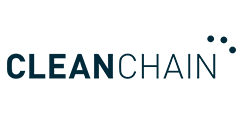Starting point for Portfolio Companies: Double Materiality Assessments
Article
ADEC Innovations assists organizations in their sustainability and impact initiatives through its Impact Scorecard . This scorecard offers a comprehensive evaluation of sustainability and impact performance, consolidating oversight of environmental, social, and governance.
The Corporate Sustainability Reporting Directive (CSRD) mandates organizations to conduct a double materiality assessment, delving into both financial and non-financial impacts on society and the environment. This requirement poses a significant challenge for organizations as they navigate the complexities of assessing their broader societal and environmental impacts. However, beyond mere regulatory compliance, double materiality assessments present an opportunity to unlock substantial ESG (Environmental, Social, and Governance) value.
These assessments can serve as a cornerstone for enhanced risk management by fostering a deeper understanding of risks and facilitating proactive measures to mitigate them. Moreover, they empower informed decision-making by providing a comprehensive view of an organization’s impact across various dimensions. Additionally, they facilitate broader stakeholder engagement, ensuring that the organization’s strategies align with diverse stakeholder expectations and concerns.
To navigate CSRD requirements effectively, private equity (PE) firms must align reporting efforts with their value creation strategies. Recognizing that ESG reporting goes beyond mere compliance is crucial, as it directly influences a firm’s market positioning, strategy, and overall business approach. In this context, the European Union has introduced a transparency framework known as the Sustainable Finance Disclosure Regulation (SFDR).
The SFDR represents a significant step towards promoting transparency and sustainability in financial markets. It requires financial market participants, including PE firms, to disclose how sustainability risks are integrated into their investment decision-making processes. Moreover, it introduces the concept of Principal Adverse Impact (PAI) indicators, which aim to identify and measure the negative impacts of investments on sustainability factors.
PAI indicators provide investors with a comprehensive understanding of the sustainability profile of their portfolios. By incorporating PAI indicators into their reporting, PE firms can demonstrate their commitment to responsible investing and provide stakeholders with valuable insights into the environmental and social implications of their investment activities.
In summary, embracing the SFDR and integrating PAI indicators into reporting efforts not only ensures compliance with regulatory requirements but also reinforces the commitment of PE firms to sustainable and responsible investing practices. By leveraging these tools, PE firms can enhance their market credibility, attract socially conscious investors, and drive positive environmental and social change through their investment activities.
Double materiality assessments can spark innovation, driving the development of products and services that address sustainability challenges while meeting market demands. By embracing these assessments as more than a regulatory burden, organizations can leverage them as strategic tools for creating long-term value while fulfilling their societal and environmental responsibilities.
How ADEC Innovations can assist:
ADEC Innovations assists organizations in their sustainability and impact initiatives through its Impact Scorecard . This scorecard offers a comprehensive evaluation of sustainability and impact performance, consolidating oversight of environmental, social, governance, and impact factors into one unified platform. Its user-friendly interface promotes transparency and efficiency in ESG data management, making it an invaluable resource for companies seeking to integrate ESG strategies into their operations. It has also been aligned to international standards providing a solid assessment of portfolio companies are required to report from an ESG perspective and understanding their impact. The scorecard acts as an evaluation tool, assessing a company’s proficiency in navigating risks and seizing opportunities across four primary pillars: Planet, People, Responsible Business, and Impact Assessment.
Contact us : dataassured@adec-innovations.com









